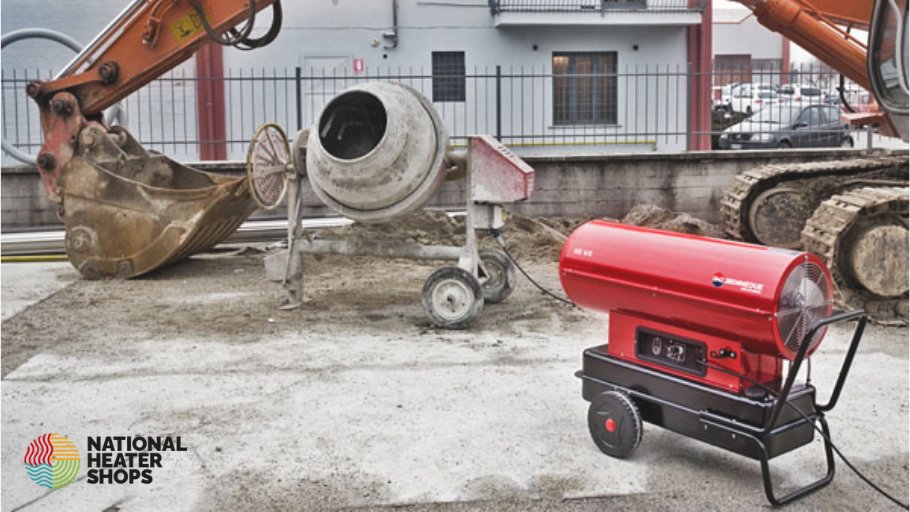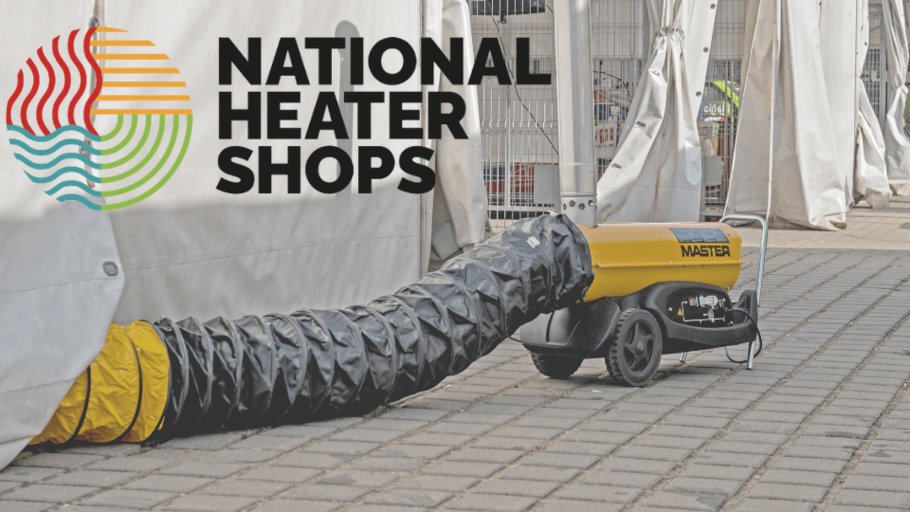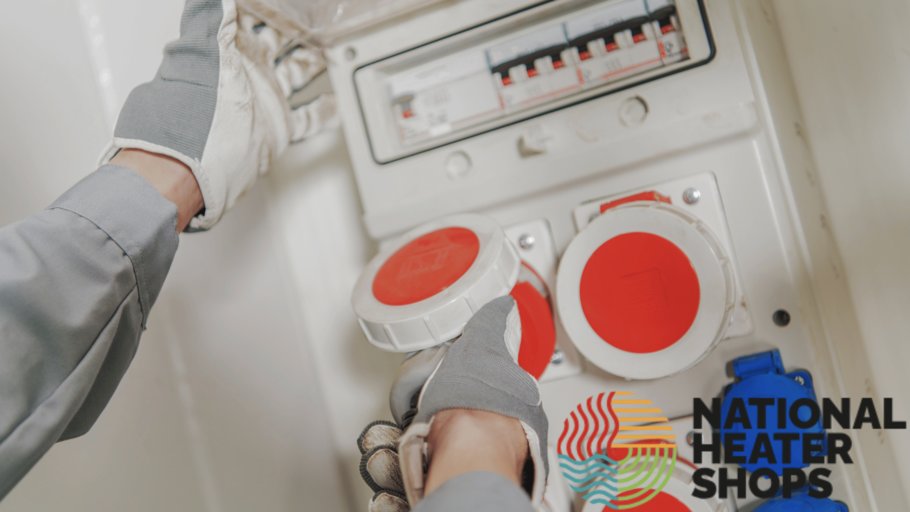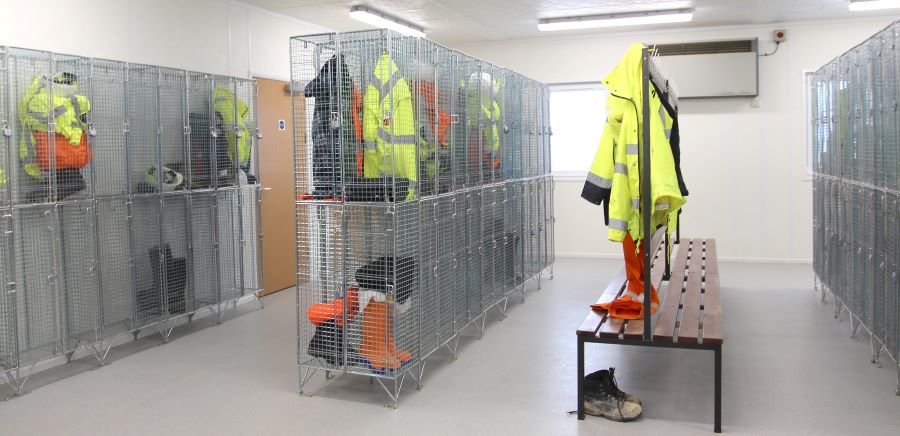Direct and indirect space heaters are used in different scenarios based on their design and functionality. Choosing between these two types depends on factors like their efficiency, safety levels and what kind of space is being heated. Direct-fired heaters boast nearly 100% efficiency in their heat delivery, while indirect models prioritise the emission of air that is entirely clean, safe, and dry.
What is a direct space heater?
Direct-fired space heaters use gas or diesel oil as fuel sources to warm the air. These heaters are highly efficient, swiftly emitting substantial amounts of heat. Nearly 100% of the fuel used is turned into useful thermal energy in an effective way. Direct-fired units offer an efficient and economical solution for heating open outdoor and well-ventilated industrial areas that receive ample fresh air.
Direct heaters house an open flame within a combustion chamber, which directly heats the incoming air upon contact before circulating it to the space. This design ensures optimal efficiency, but it's important to note that the heat produced might contain carbon monoxide, fumes, moisture and odours as byproducts. Therefore, users must be very cautious while operating, and direct oil-fired space heaters should never be employed within confined, poorly ventilated environments.
How does a direct space heater work?
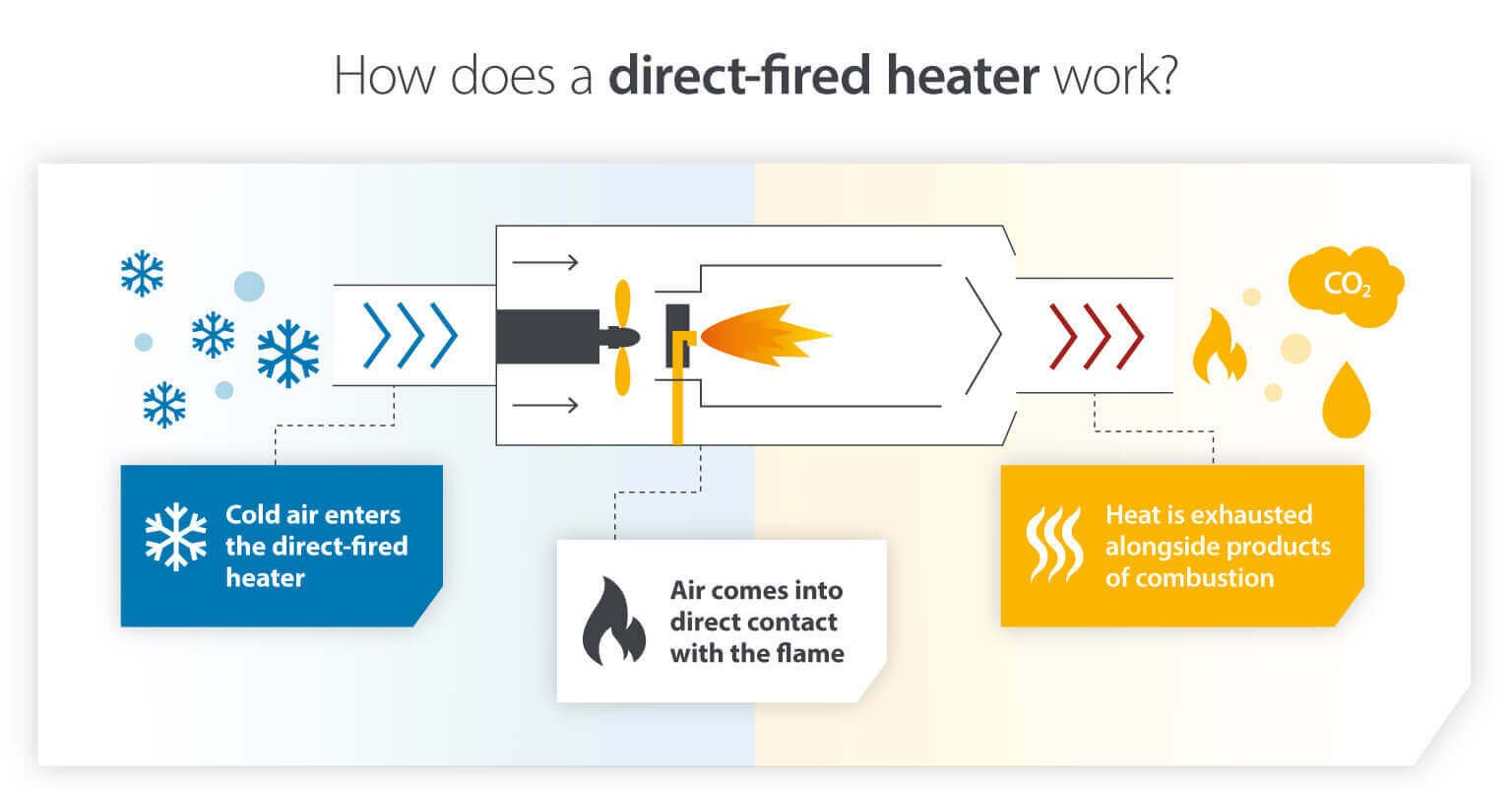
A direct space heater operates by burning fuels like gas or diesel oil to generate an open flame, which becomes the primary heat source. This flame directly heats the air within a combustion chamber, causing rapid warming.
The heated air is then pushed out into the targeted space through a fan, ensuring even distribution and raising the ambient temperature swiftly. This method of direct heat transfer leads to high efficiency, as most of the heat produced is directly transferred to the circulated air, effectively converting fuel energy into heat energy.
What is an indirect space heater?
Indirect-fired heaters also utilise fuel combustion, which is similar to gas or diesel appliances found in buildings. They consist of a combustion chamber with an enclosed flame that doesn't come into direct contact with the incoming air. Instead, the air circulates around a heat exchanger, receiving warmth before distribution.
Designed for enclosed, indoor, and poorly ventilated locations, these heaters exclusively generate clean, fume-free, and dry warm air. This versatility allows for their secure application in heating environments like halls, event tents, workshops, marquees, galas, farmhouses, and various other indoor settings. For instance, they provide an ideal heating system for a wedding tent, ensuring safety and comfort by keeping the heat sources separate from the participants.
How does an indirect space heater work?
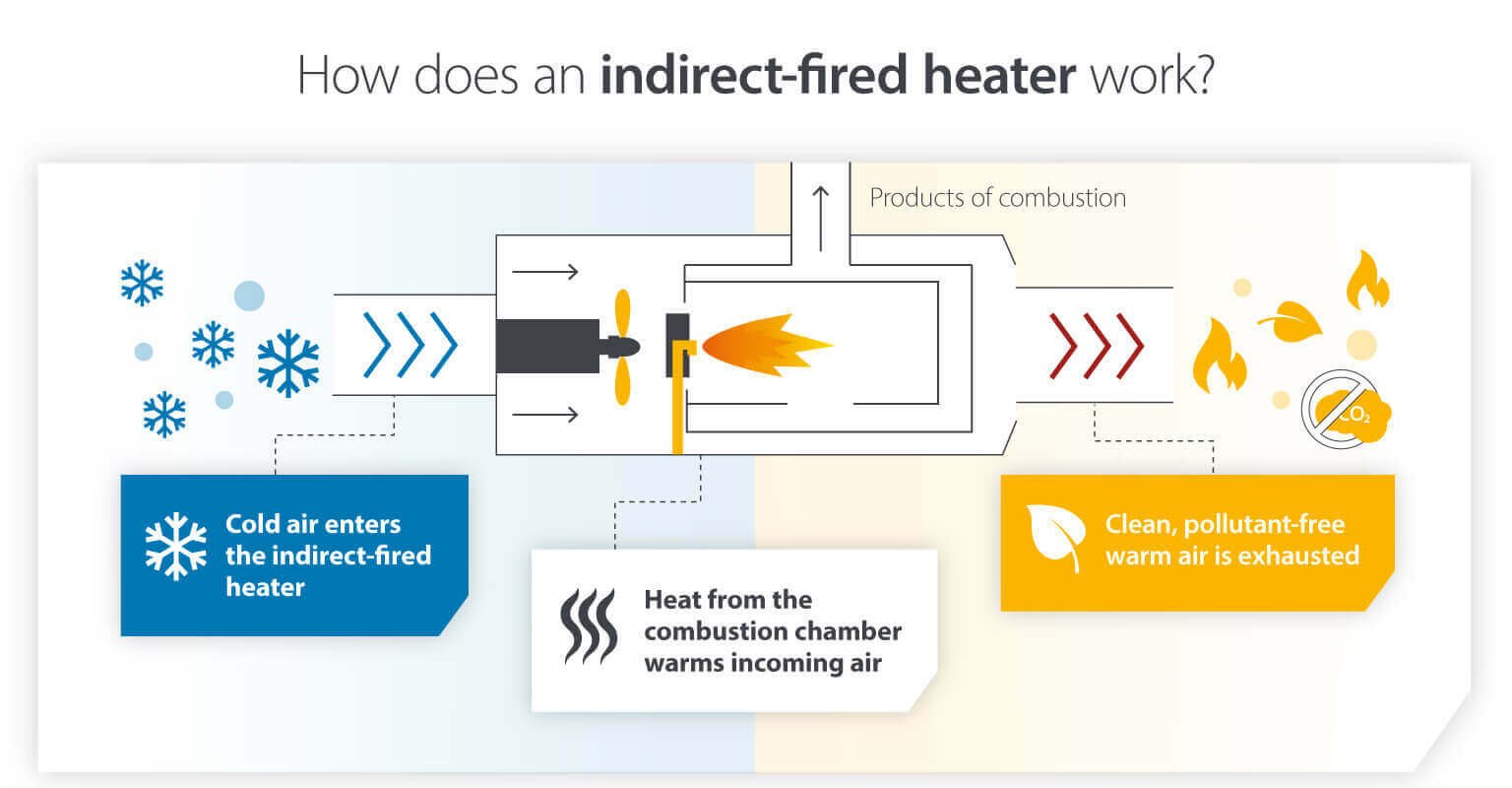
These heaters can be powered using diesel, heating oil, paraffin or kerosene. A combustion chamber holds the flame, which heats a heat exchanger. A rear fan then draws air in, directing it around the heat exchanger. The air's temperature increases as it passes over the heat exchanger. Clean, warm air is then released from the front of the heater, while exhaust fumes exit the unit through the flue on top.
Where should they be used?
Direct-fired heaters:
They offer exceptional efficiency, generating substantial volumes of warming airflow. Crafted from simple yet sturdy components, direct diesel space heaters boast a design that's both compact and lightweight, ensuring effortless portability.
Their impressive ability to operate effectively in colder temperatures while delivering substantial heat output makes them the perfect choice for various industrial applications, including warehouses, factories, garages, construction sites, workshops, garages with large open shutter doors, hangars and material yards.
Despite their efficiency resulting from direct heat transfer, they do emit combustion byproducts, which give rise to potential air quality concerns. Therefore, it is strongly advised not to use them in enclosed indoor spaces.
Indirect-fired heaters:
They are remarkably versatile. The 100% clean and safe warm air they produce allows for use in sensitive environments like food processing plants, oil refineries, foundries, and storage facilities. This quality also makes them particularly well-suited for securely and efficiently heating enclosed and poorly ventilated areas, such as workshops, halls, marquees, and spaces inhabited by individuals and animals.
The design of indirect diesel space heaters ensures their portability. These heaters are capable of being positioned externally to the intended heating area, with the option to channel clean and warm air inside using flexible hoses and ducting. Alternatively, they can be utilised as a semi-permanent heating solution by locating the unit indoors and incorporating a flue to expel fumes outside through a wall or roof.
Their dry, warm air output makes them suitable for drying tasks and frost protection. They complement industrial fans and dehumidifiers effectively. If you need more heat in a room with good ventilation, like a construction site, a direct diesel space heater might be a better choice.
Direct or indirect space heating: which is right for me?
When choosing a suitable type of heater, evaluate initial and operational expenses, along with the available ventilation in the intended area. Take into account the following considerations as well:
- Indirect heaters can be positioned outdoors, using flexible ducting to direct warm air indoors, or indoors with flue pipes to exhaust fumes outside. It is ideal for enclosed or inadequately ventilated indoor areas.
- Compared to indirect units, direct space heaters are cost-effective and efficient in terms of fuel consumption but are not recommended for enclosed, poorly ventilated spaces.
Quality direct & indirect space heaters available online
We have a wide range of space heaters available to buy online. They come in various sizes and heating capacities to suit different spaces and requirements. Whether you need a direct space heater for a well-ventilated area or an indirect heater for enclosed spaces, we have options to meet your needs.
Our space heating units are designed with different fuel options, such as natural gas or propane. Some also come with safety features or a remote thermostat for temperature control. Shop now and stay warm with our high-quality space heaters as you need them!

